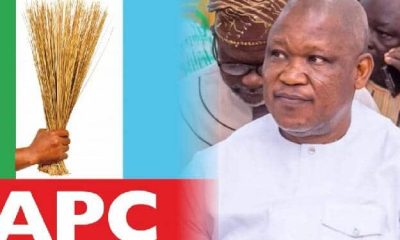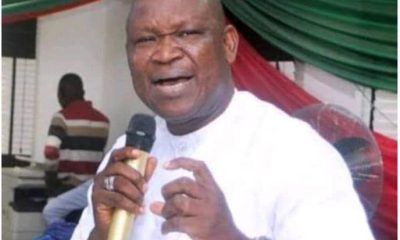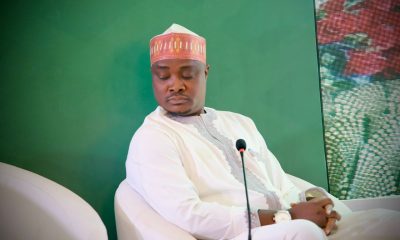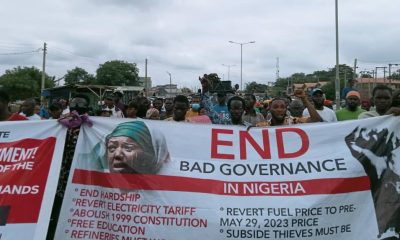News
Youth Day: Where Is The Youth Development Infrastructure? By Olawale Rasheed

Youth Day: Where is the Youth Development Infrastructure?
By Olawale Rasheed
International Youth Day is celebrated annually to refocus attention of government to the deep seated crisis facing the youth sector. The annual ritual is increasingly irrelevant and ineffective in tackling the myriads of developmental challenges confronting the youth.
The question is –where is youth development infrastructure?
Across African continent, there is a reprehensible deficiency in handling the youth sector. With the exception of few countries like South Africa, Kenya and Ghana to an extent, youth sector is treated with kid gloves with elected officials equating unsustainable empowerment with okada as youth development. An open aversion for mechanics of youth growth and development exists in most Sub-Sahara Africa. That is a major drawback to national development as the youth defined as age 18 to 35 forms the fulcrum of productive sector of the society.
In Europe and North America, the sector is accorded serious attention with policy overlay covering key sections of youth life and living. Governmental programmes cover pre-youth to the post-youth level. This ensures an orderly transition within the various age ranges within the population.
There exists over there a deliberate crafting of policies covering youth education, employment, leadership and networking. Youth transition policies are jointly anchored by government, her agencies, non-governmental organizations and series of institutions devoted to youth studies.
In Nigeria, several governments in the past have made attempt to create a sustainable youth development infrastructure for the country. From National Youth Policy to youth development centers, succeeding governments pushed for a renewed attention to the youth sector. The golden age of that attempt was during the Sheu Musa Yar’Adua presidency when Nigerian youth assumed prime position within government policy politics. The Minister of Youth Development then, Senator Akinlabi Olasunkanmi introduced far reaching reforms and innovations to the youth sector.
A conscious attempt was made to create a functioning youth development infrastructure for the country. Many policies initiatives were introduced and Nigeria was a reference point for other nations in the youth sector. In several international fora, Nigeria and her many policies and innovations on youth were cited as a model.
What were those integrated youth infrastructures introduced during the Yar’Adua presidency? First, the National Youth Policy was remodeled and upgraded to best practice, with new areas of youth growth inserted and with an implementable action plan included. This was not just a documents but a living road map specifying milestones and attainments level before the next review.
This was followed by the introduction of National Youth Mainstreaming policy which insists that all government sectors must have a youth desk and should always factor youth benefits and cost in government programs before implementation. The goal was to ensure that government serves the youth whether it be in construction, health, culture or education. Despite stiff resistance, the policy was approved by the Federal Executive Council. Today it is thrown into the dustbin.
After this was the enlarged policy document on the National Youth Development Center. The reasoning then was that youth training and socialization demands focal points across the nooks and crannies of the country. The goal was to ensure that a well-equipped youth center exists across the senatorial districts and later within each local government, training youth in skills, providing counseling and networking spots for the youth. Some of the youth centers were built even though they are in wasting away across the country.
Worried over lack of youth access to finance for entrepreneurship ventures, the National Youth Fund was proposed and modeled after successful ones in Kenya and South Africa. Those who think too much is going to the youth killed the initiative.
Equally disturbed by the threatening joblessness among youth, a National Youth Employment Action Plan was created in collaboration with the International Labour Organization {ILO]. That plan is gathering dust in government shelf.
Looking into political leadership training for youth, the National Youth Parliament was established. The programme seeks to have each state having three youth parliamentarians, with all of them assembling on quarterly basis in Abuja to deliberate on youth related issues. Their resolution is to be passed to the National Assembly for further action. Each state is to proceed to establish similar parliament with each local government having a representative and their resolution to be submitted to the state assembly.
The Speaker of Akwa Ibom House of Assembly today was the pioneer speaker of the Nigerian Youth Parliament. That is an example of how leadership training can benefit the youth in the nation’s political process. But sadly, most states ignored the idea of state youth parliament.
Sad enough, most items listed above are neither followed through nor implemented as conceived in line with international best practice. Subsequent governments have relapsed to treating youth development as one or two day empowerment event. The proposed transformation of the National Youth Service Corps was abandoned. The National Youth Council of Nigeria, a once virile umbrella body for Nigerian youth, was diluted. Growing gang culture and drug crisis elicit no policy response. Even insurgency has not forced a rethink about the abandonment of the National Youth Employment Action Plan.
Nigeria today lacks functioning youth development infrastructure very critical to meaningful resolution of problems and crisis facing the youth. The more we see more okada and wheel barrows as youth development, the more the crisis of national stability will deepen, the more the nation risks an implosion from youth discontent.
We can still act before it is too late. Government at all levels should craft best practice youth policies and follow through implementation. A stich in time saves nine.
*Olawale Rasheed, a former Ministerial Adviser at the Federal Ministry of Youth Development, writes from Abuja
-

 News4 days ago
News4 days agoGuests Express Shock As Headmistress Slumps, Dies During Retirement Ceremony In Osun
-

 News5 days ago
News5 days ago4 Places In Lagos You Should Avoid Walking Alone At Night
-

 Foreign News5 days ago
Foreign News5 days ago2025 Pan-Afrikan Drum Festival In Canada Gains Momentum As Nigerian High Commission In Ottawa Pledges Support
-

 News4 days ago
News4 days agoUS Court Orders FBI, DEA To Release Tinubu’s Investigation Records















